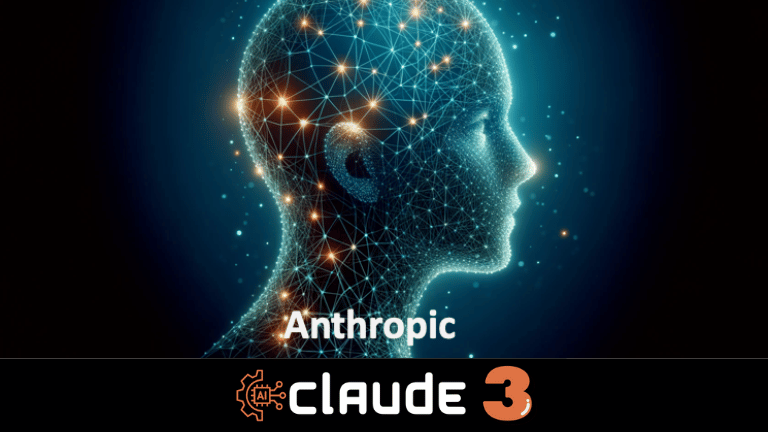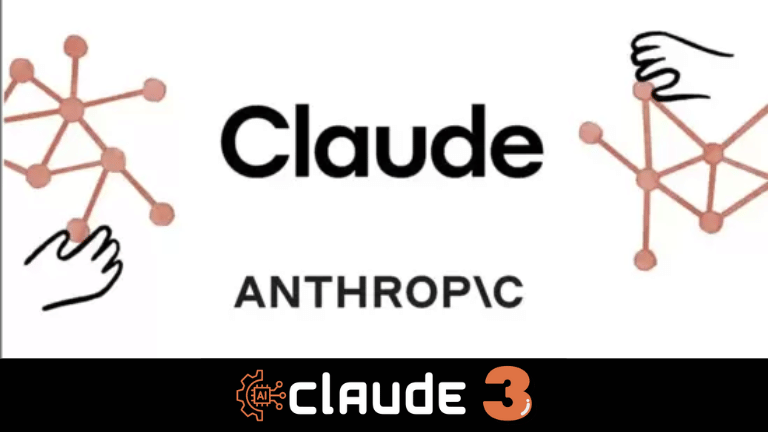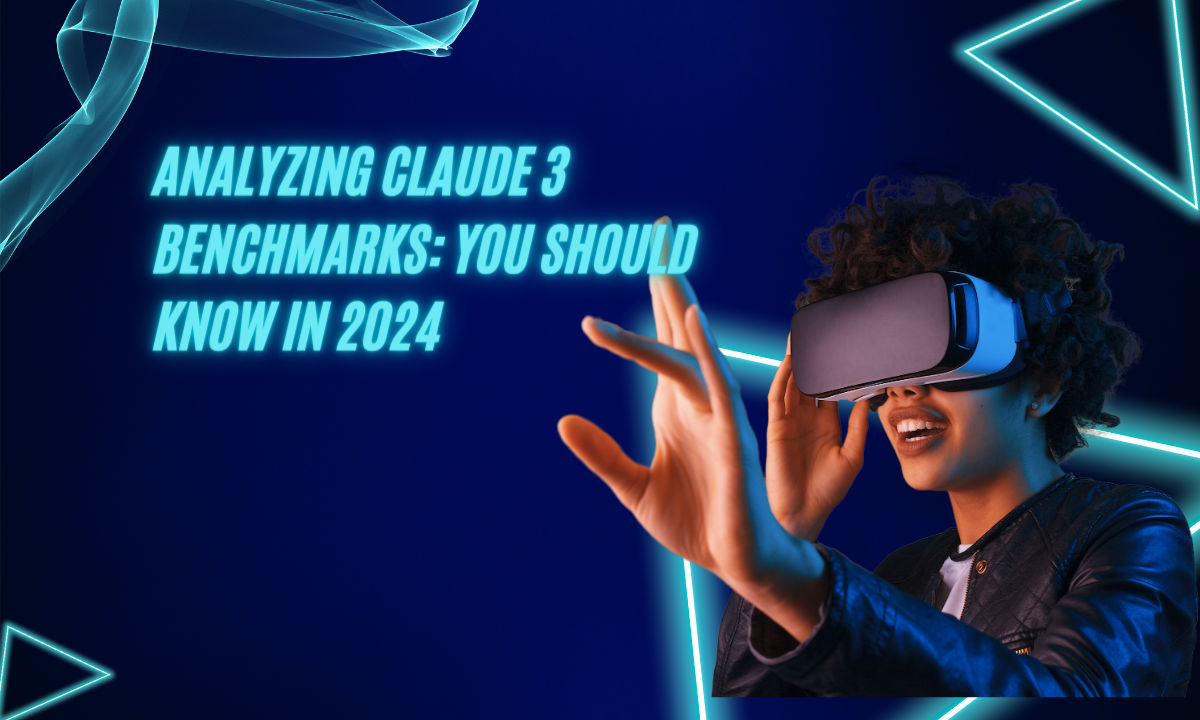Analyzing Claude 3 Benchmarks: You Should Know in 2024. In the rapidly evolving field of artificial intelligence (AI), particularly in the domain of natural language processing (NLP), rigorous evaluation and benchmarking are crucial for assessing the capabilities and performance of language models. As Anthropic’s Claude 3 continues to garner attention for its remarkable language understanding and generation abilities, it becomes imperative to examine its performance on industry-standard benchmarks and metrics.
Benchmarks and metrics serve as objective tools for comparing the performance of AI models across various tasks and domains, enabling researchers, developers, and stakeholders to gauge the strengths, weaknesses, and potential applications of these models. By subjecting Claude 3 to a comprehensive suite of benchmarks and evaluations, we can gain valuable insights into its capabilities, identify areas for improvement, and facilitate meaningful comparisons with other state-of-the-art language models.
Embracing Transparency and Reproducibility
Anthropic, as a company dedicated to responsible and ethical AI development, recognizes the importance of transparency and reproducibility in the evaluation process. To this end, the company has committed to publishing detailed reports and findings from Claude 3’s benchmark evaluations, ensuring that the broader research community and stakeholders can scrutinize and validate the model’s performance.
By embracing open science principles and fostering collaboration, Anthropic aims to advance the field of NLP and contribute to the collective understanding of language AI capabilities. This transparency not only promotes accountability but also enables other researchers and organizations to build upon the findings, conduct further analyses, and contribute to the ongoing improvement of language models like Claude 3.
Standard Benchmarks and Evaluation Tasks
To comprehensively assess Claude 3’s performance, Anthropic has subjected the model to a wide range of industry-standard benchmarks and evaluation tasks, spanning various domains and linguistic challenges. These benchmarks are designed to test language models’ abilities in areas such as reading comprehension, natural language inference, commonsense reasoning, question answering, and language generation.
Some of the prominent benchmarks and tasks used to evaluate Claude 3 include:
- GLUE (General Language Understanding Evaluation): A widely-used benchmark suite that encompasses various natural language understanding tasks, including sentiment analysis, textual entailment, and semantic similarity.
- SQuAD (Stanford Question Answering Dataset): A popular reading comprehension benchmark that evaluates a model’s ability to answer questions based on provided passages of text.
- WinoGrande: A challenging commonsense reasoning task that assesses a model’s understanding of context and coreference resolution.
- LaMBDA: A suite of language model benchmarks that test a wide range of capabilities, including task-completion, question answering, and abstractive summarization.
- Writing Tasks: Evaluations that assess Claude 3’s ability to generate coherent, creative, and contextually appropriate text across various genres, such as storytelling, poetry, and persuasive writing.
By subjecting Claude 3 to these diverse benchmarks and tasks, Anthropic can gain a comprehensive understanding of the model’s strengths, limitations, and areas for potential improvement, enabling informed decision-making and targeted optimization efforts.
Comparative Analysis and Industry Positioning
In addition to evaluating Claude 3’s performance on individual benchmarks, Anthropic has also conducted comparative analyses to position the model within the broader landscape of state-of-the-art language models. By comparing Claude 3’s performance against other prominent models, such as GPT-3, PaLM, and LaMDA, researchers can gain insights into the relative strengths and weaknesses of these systems, as well as identify potential areas for collaboration and knowledge sharing.
These comparative analyses not only provide a basis for objective evaluation but also foster healthy competition and drive innovation within the NLP community. By setting new benchmarks and pushing the boundaries of what is possible, Claude 3 and other cutting-edge language models inspire researchers and developers to continually refine and advance their models, ultimately benefiting the entire field and paving the way for more powerful and capable AI systems.
Continuous Evaluation and Iterative Improvement
Benchmarking and evaluation are not one-time exercises; they are ongoing processes that enable continuous improvement and refinement of language models like Claude 3. As new benchmarks and evaluation tasks emerge, and as the model is deployed in real-world applications, Anthropic remains committed to consistently monitoring and assessing its performance.
Through iterative evaluation cycles, Anthropic can identify areas for improvement, implement targeted optimizations, and leverage the insights gained from benchmarking to enhance Claude 3’s capabilities. This continuous evaluation and improvement cycle not only ensures that the model remains relevant and competitive but also fosters a culture of continuous learning and growth within the organization.
Furthermore, by engaging with the broader research community and seeking feedback from domain experts and end-users, Anthropic can better understand the practical implications and real-world applications of Claude 3, informing future development efforts and aligning the model’s capabilities with the evolving needs of various industries and stakeholders.

Ethical Considerations and Responsible Benchmarking
While benchmarking and evaluation are essential for assessing the performance and capabilities of language models like Claude 3, it is crucial to acknowledge and address the potential ethical considerations that arise from these processes. As AI systems become increasingly sophisticated and capable, there are valid concerns regarding privacy, bias, and the potential for misuse or unintended consequences.
Anthropic recognizes these ethical challenges and is actively engaged in developing robust frameworks and best practices for responsible benchmarking and evaluation. This includes implementing rigorous data privacy and security measures, mitigating potential biases in benchmark datasets, and ensuring that the evaluation process itself does not inadvertently contribute to or reinforce harmful stereotypes or biases.
Furthermore, Anthropic is committed to fostering open and transparent dialogues with stakeholders, policymakers, and the broader public to address concerns and ensure that the development and deployment of language models like Claude 3 align with ethical principles and societal values.
Benchmarking for Real-World Applications
While standard benchmarks and evaluation tasks provide a valuable foundation for assessing the capabilities of language models like Claude 3, it is equally important to consider the model’s performance in real-world applications and domain-specific scenarios. Anthropic recognizes the diverse range of industries and use cases that could benefit from advanced language AI, and as such, has undertaken targeted benchmarking efforts tailored to specific domains and practical applications.
Industry-Specific Benchmarks and Evaluations
One of the key areas of focus for Anthropic’s benchmarking efforts is the evaluation of Claude 3’s performance in industry-specific contexts. By collaborating with domain experts and stakeholders from various sectors, Anthropic has developed custom benchmarks and evaluation tasks that simulate real-world scenarios and challenges faced by these industries.
For instance, in the legal domain, Claude 3 has been evaluated on its ability to comprehend and analyze complex legal documents, identify relevant case law and precedents, and generate coherent and well-reasoned legal briefs and opinions. This domain-specific benchmarking not only assesses Claude 3’s language capabilities but also its potential to augment and enhance legal research, document analysis, and decision-making processes within the legal profession.
Similarly, in the healthcare sector, Claude 3 has undergone evaluations focused on its ability to understand and synthesize medical literature, clinical notes, and patient records. The model’s performance in tasks such as medical question-answering, diagnosis assistance, and patient education material generation has been rigorously tested, providing insights into its potential applications in healthcare settings and medical research.
By tailoring benchmarks and evaluations to specific industries and domains, Anthropic can better understand Claude 3’s strengths, limitations, and potential impact in real-world scenarios. This targeted approach not only informs the ongoing development and optimization efforts but also enables Anthropic to engage in meaningful dialogues with industry partners, identify collaboration opportunities, and tailor the model’s capabilities to meet the unique needs of each sector.
Multimodal Benchmarking and Evaluation
As language models like Claude 3 continue to advance, there is a growing recognition of the importance of multimodal capabilities – the ability to process and integrate information from various modalities, such as text, images, audio, and video. To address this emerging need, Anthropic has invested in developing multimodal benchmarks and evaluation tasks that assess Claude 3’s performance in scenarios that involve multiple data modalities.
One example of a multimodal benchmark is the evaluation of Claude 3’s ability to generate descriptive captions for images or videos. This task requires the model to comprehend and interpret visual information while generating contextually relevant and accurate textual descriptions. Such evaluations not only test Claude 3’s language generation capabilities but also its ability to integrate and reason about multimodal inputs.
Another area of multimodal benchmarking involves assessing Claude 3’s performance in tasks that combine textual and auditory information, such as transcribing and summarizing audio recordings or generating natural language responses based on both text and audio inputs. These evaluations simulate real-world scenarios where language models must process and integrate information from multiple modalities, such as in virtual assistant applications or multimedia content analysis.
By embracing multimodal benchmarking and evaluation, Anthropic is positioning Claude 3 at the forefront of the evolving landscape of language AI, where the ability to seamlessly process and integrate diverse data modalities is becoming increasingly crucial. This approach not only expands the potential applications of Claude 3 but also contributes to the broader research efforts aimed at developing truly multimodal and multisensory AI systems.
Collaborative Benchmarking and Knowledge Sharing
In the pursuit of advancing the field of language AI and fostering responsible innovation, Anthropic recognizes the importance of collaboration and knowledge sharing within the research community. Benchmarking and evaluation efforts are not solely internal endeavors but rather opportunities for collaboration, peer review, and collective progress.
Anthropic actively participates in collaborative benchmarking initiatives, where researchers from various organizations and institutions come together to develop, validate, and disseminate benchmark datasets and evaluation methodologies. By pooling their expertise and resources, these collaborative efforts ensure that benchmarks remain robust, diverse, and representative of the evolving challenges in natural language processing.
One notable example of such a collaborative initiative is the GLUE (General Language Understanding Evaluation) benchmark, which encompasses a suite of diverse natural language understanding tasks. By contributing to and participating in GLUE, Anthropic not only gains access to a comprehensive evaluation framework but also contributes to the collective knowledge and understanding of language model capabilities.
Furthermore, Anthropic actively shares its benchmarking findings, methodologies, and insights with the broader research community through peer-reviewed publications, conference presentations, and open-source repositories. This open and transparent approach fosters knowledge dissemination, enables peer review and scrutiny, and encourages replicability and reproducibility – core tenets of scientific progress.
By engaging in collaborative benchmarking efforts and embracing open science principles, Anthropic not only strengthens its own research and development efforts but also contributes to the collective advancement of language AI. This collaborative approach facilitates cross-pollination of ideas, enables knowledge sharing, and accelerates the pace of innovation, ultimately benefiting the entire research community and society at large.
Continuous Benchmarking for Adaptive Language Models
As language models like Claude 3 continue to evolve and adapt through techniques such as continual learning and model fine-tuning, the need for continuous benchmarking and evaluation becomes increasingly important. Anthropic recognizes that the capabilities and performance of these adaptive models can change over time as they are exposed to new data, domain-specific knowledge, and real-world interactions.
To ensure that Claude 3 maintains its high level of performance and continues to align with the evolving needs of various applications, Anthropic has implemented a robust framework for continuous benchmarking and evaluation. This approach involves regularly subjecting the model to a comprehensive suite of benchmarks, tracking its performance over time, and identifying any deviations or areas for improvement.
One key aspect of this continuous benchmarking process is the incorporation of real-world feedback and interaction data. As Claude 3 is deployed in various applications and interacts with end-users, Anthropic collects and analyzes this data, using it to inform the benchmarking process and identify potential areas for improvement or fine-tuning.
For example, if user feedback or interaction data suggests that Claude 3 is struggling with a particular type of query or task in a specific domain, Anthropic can create targeted benchmarks and evaluations to thoroughly assess the model’s performance in that area. This data-driven approach ensures that the benchmarking efforts remain relevant and aligned with the practical challenges and use cases encountered in real-world scenarios.
Additionally, Anthropic leverages advanced techniques such as adversarial testing and stress testing to evaluate Claude 3’s robustness and resilience under various conditions and edge cases. By subjecting the model to intentionally challenging or adversarial inputs, researchers can identify potential vulnerabilities, biases, or inconsistencies, enabling proactive mitigation and strengthening of the model’s capabilities.
Conclusion: Continuous Pursuit of Excellence
The evaluation and benchmarking of Claude 3 represent a critical step in Anthropic’s pursuit of excellence in the field of natural language processing. By subjecting the model to a comprehensive suite of industry-standard benchmarks and evaluation tasks, Anthropic demonstrates its commitment to transparency, accountability, and the relentless pursuit of innovation.
Through rigorous evaluation and comparative analyses, Claude 3’s capabilities are put to the test, providing valuable insights into its strengths, limitations, and potential applications. This process not only informs the ongoing development and optimization efforts but also positions Claude 3 within the broader landscape of state-of-the-art language models, fostering healthy competition and driving the entire field forward.
However, benchmarking and evaluation are not mere exercises in performance metrics; they are integral components of a larger journey towards responsible and ethical AI development. By addressing potential ethical considerations, mitigating biases, and fostering open dialogues with stakeholders, Anthropic ensures that the pursuit of excellence in language AI remains grounded in principles of fairness, transparency, and alignment with societal values.
As Claude 3 continues to evolve and push the boundaries of what is possible in natural language processing, the benchmarking and evaluation process will remain a critical component of Anthropic’s commitment to continuous improvement and responsible innovation. Through this relentless pursuit of excellence, coupled with a steadfast adherence to ethical principles, Claude 3 has the potential to shape the future of language AI, unlocking new realms of human-machine interaction and driving progress across a wide range of industries and applications.

FAQs
What are Claude 3 Benchmarks?
Claude 3 Benchmarks are standardized tests or evaluations used to measure the performance, capabilities, and efficiency of the Claude 3 AI model.
Why are Claude 3 Benchmarks important?
Claude 3 Benchmarks provide objective measures for assessing the quality and effectiveness of the Claude 3 AI model, helping researchers and developers understand its strengths, weaknesses, and areas for improvement.
What types of benchmarks are used for evaluating Claude 3?
Various benchmarks may be used to evaluate Claude 3, including natural language understanding tasks, question-answering tasks, language generation tasks, and more. These benchmarks cover a range of linguistic and cognitive abilities.
How are Claude 3 Benchmarks created?
Claude 3 Benchmarks are typically created by researchers and developers in the field of natural language processing (NLP). They design standardized tasks and datasets that assess specific aspects of language understanding, generation, or reasoning.
What are some examples of Claude 3 Benchmarks?
Examples of Claude 3 Benchmarks include tasks like sentiment analysis, named entity recognition, machine translation, text summarization, and language modeling. Each benchmark evaluates Claude 3’s performance on a specific linguistic or cognitive task.
How is Claude 3’s performance measured on these benchmarks?
Claude 3’s performance on benchmarks is measured using metrics such as accuracy, precision, recall, F1 score, perplexity, or BLEU score, depending on the nature of the benchmark task.
